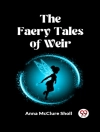On the surface the plot follows the story of a penniless, starving author called Geoffrey Tempest. So poor that he is behind on his rent and can barely afford light in his room, he receives three letters. The first is from a friend in Australia who has made his fortune and offers to introduce him to a good friend who might be able to lift him from poverty. The second is a note from a solicitor detailing that he has inherited a fortune from a deceased relative. The third is a letter of introduction from a foreign aristocrat called Lucio, who befriends him and proceeds to be his guide in how best to use his newfound wealth.
Tempest remains blissfully unaware throughout the novel, despite warnings from people he meets, that Lucio is the earthly incarnation of the Devil. Over the course of the book, his wealth leads to misery. Eventually, when confronted with the true nature of his companion, he renounces evil and returns to society penniless but content with the chance to purify his soul.
Although the plot follows Tempest’s fall from grace and subsequent redemption, he is in many regards a secondary character to Lucio. Both the title of the work and much of its philosophical content relate to the supreme yearning within Satan to achieve salvation. The book’s main contribution to Faustian literature is the introduction of the concept that above all other people it is Satan who most truly believes in the Gospel, and yet he is forbidden ever to partake of it.
Об авторе
Mary Mackay, also called Minnie Mackey, and known by her pseudonym Marie Corelli was an English novelist.
From the appearance of her first novel A Romance of Two Worlds in 1886, she became the bestselling fiction-writer in England, [citation needed] her works largely concerned with Christianity, reincarnation, astral projection and mysticism. Yet despite her many distinguished patrons, she was often ridiculed by critics. Corelli lived her later years in Stratford-upon-Avon, whose historic buildings she fought hard to preserve.












